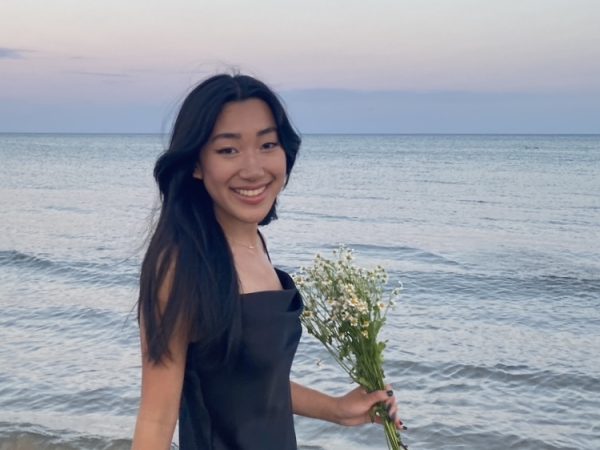
Senior Anna Zheng (she/her) is in her fourth year of journalism. Previously, she served as Social Media Editor for two years and spent a summer at the...
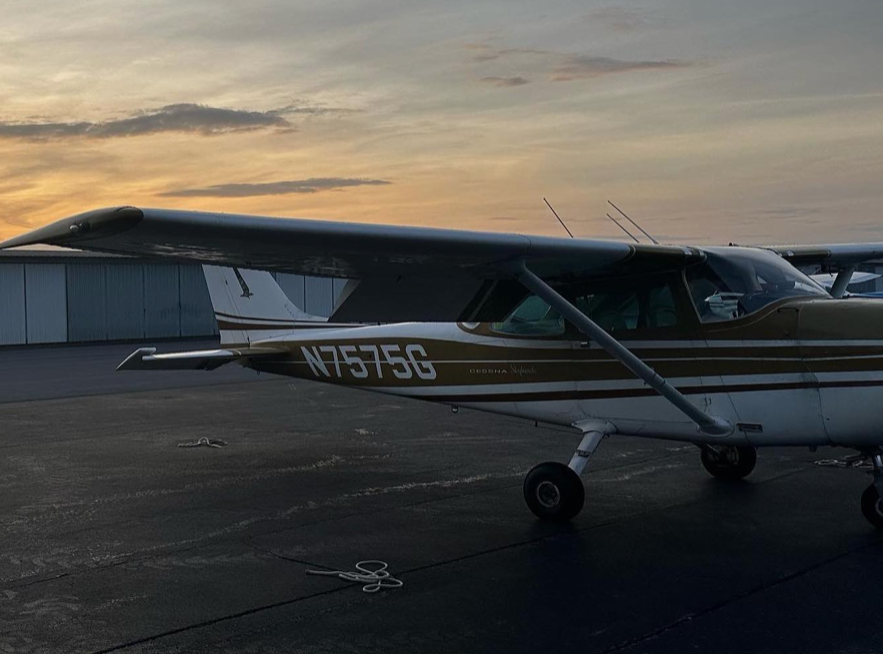

High school pilots Graham and Wade are happiest above the clouds.
March 22, 2023
Chapter 1………………..In the Air
Chapter 2………………..Take-Off
Chapter 3……….Learning to Fly
Chapter 4…………….Turbulence
Chapter 5………On the Horizon
Chapter 6……….The Other Side
“You’re able to fly in the air like Superman. Who hasn’t dreamed of that as a kid?”
Both junior Wade Davis and senior Graham DeVito get to experience the thrill of flying from the cockpit of a plane.
Though the force of the plane can be jarring as you’re thrust into control of the 2000 pound vessel, the serenity and scenery from 38,000 feet in the air are some of Davis and DeVito’s favorite things about flying.
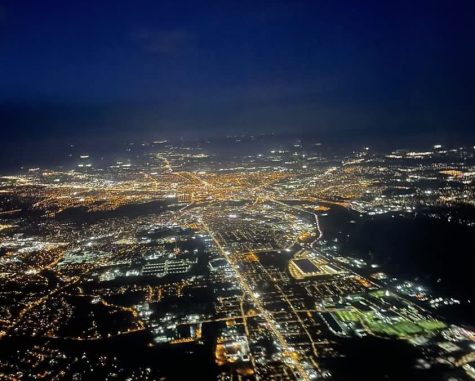
“There’s just this sense of peace when you’re out there,” DeVito said. “You’re not around a bunch of people [like] on the ground. You have space.”
DeVito’s favorite view was during a flight over the Space Coast barrier islands in Florida. With the sun rising from the ocean horizon, pink light cast over the water and jumping dolphins below. “It’s the coolest thing I’ve seen.”
Meanwhile, Davis’ favorite view was the nighttime Lynchburg cityscape. “That [flight] was probably the sickest thing I’ve ever done. It’s crazy to me,” he said. “You see how all the cities connect together, and then everything else is black.”
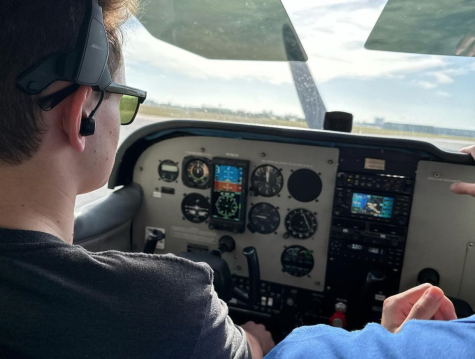
Both pilots were introduced to formal flying through a discovery flight, where aspiring pilots try a short, assisted flight in a small, single engine piston plane.
For DeVito, flying is a childhood dream fulfilled. “I’ve always been interested in air travel. Basically anything that flies,” he said. From a young age, he has flown and visited the flight deck of large aircrafts.
Even so, his discovery flight was still a moment of reckoning. “It really hit me there: this was a career where you wouldn’t be doing the same thing every day. There’s always some different challenges that can come up.”
The most exciting of such challenges for DeVito was a flight to Dulles International, surrounded by larger planes in icy weather.
Meanwhile, Davis had no previous interest in flying until his first and favorite experience: his discovery flight in Florida. He originally wanted to play baseball, but a family friend suggested flying to him. “I got into that cockpit and I took off for the first time — it was one of the scariest moments of my life.”
Despite the nerves, by the time he landed in Orlando, Davis was over his fear. He got off the plane to meet up with his sister who attended college there. “That’s what really hooked me on. I was able to see my family.”
Since that initial spark, the freedom of flying for Davis has never faded.
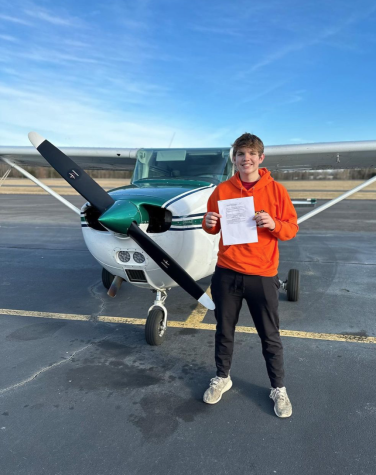
The two have each been flying for under a year — DeVito reached 100 flight hours on March 7, whilst Davis is currently at hour 62.
Their Private Pilot Certificates, the piloting equivalent of a driver’s license, allow them to fly whenever they want. The training process for certification involves flight practice and ground school training to cover practical skills and general aviation knowledge.
The flying aspect came naturally to both pilots — in fact, the national average for flight training is 90 hours, but Davis and DeVito each completed it in half the time.
“Some people learn quicker than others. This isn’t like driving a car — it’s completely different,” DeVito said. “It took me two months, but some people take one and a half years.”
“I caught on very quickly,” Davis said. “You have to have the motivation to do it.”
It wasn’t all smooth sailing, though. Pilots must pass an oral, written and checkride (flight) exam to get a license, which requires a lot of studying.
Davis spent his nights studying and mornings flying, sacrificing other plans to become a better pilot. He even mimicked flight procedures from his bed by “chair flying” which “helps you memorize everything around the plane.”
Meanwhile, DeVito failed his first private pilot checkride, which he considers both his biggest obstacle and “an eye opener.”
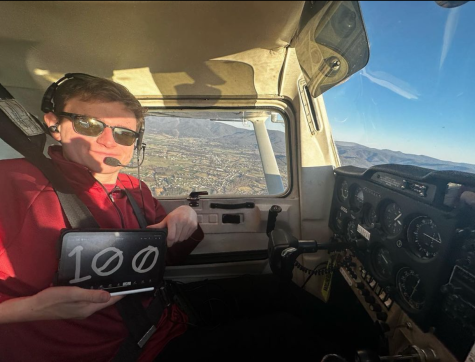
“It made me stand back and look at the bigger picture and be like, ‘Don’t get ahead of yourself here… that’s how people get killed,’” DeVito said.
Staring down the runway with just 43 hours of training, DeVito’s confidence backfired as he failed to hold a crosswind correction angle amidst 10 knots of wind. After remedial training, DeVito passed on his second official attempt.
“I didn’t get discouraged, which is the biggest thing. [Failing] really made me want to make sure that all my landings were as good as they could be,” he said. “I’m really happy I [initially failed] because it ended up making me a better pilot.”
Now, the pilot’s seat is a place of comfort.
“Where I’m really confident is the plane because that’s where my training is,” DeVito said. He feels much safer there than in a car. “I think it’s fair to say there’s a lot more control going on.”
Even so, things are never exactly the same in the air — there’s a lot of unpredictability.
On one of Davis’ solo cross-country flights, there was a major communication error. “[The control tower] was screaming that there was traffic 100 feet under me,” he said. “I looked out of the plane and there’s just this little Cessna flying right under me.” To compound the chaos, Davis was sent to the wrong radio frequency on the flight back.
Despite the danger, the thrill of flying is thoroughly worth it for Davis. “It jumpscares you, but you gotta love it,” he said. “It just boosted my excitement, and I had to figure out how to handle it.”
DeVito feels spurred by the unpredictability of flying to be more conscientious in the air. “Getting complacent is probably the quickest way to get yourself killed… and I prefer to stay in the business of living,” he said. “I’m learning something new everyday.”
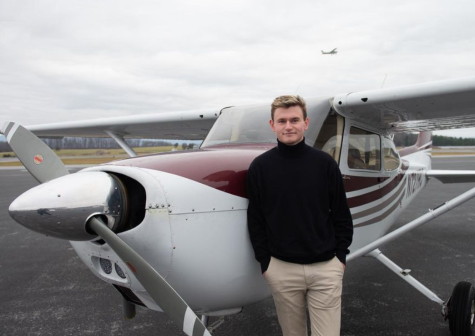
DeVito and Davis both plan to fly commercially and go to school for aviation.
DeVito will attend Florida Tech next year to finish his studies and training, then begin interviewing with United Express’ cadet program. He hopes to work his way up from regional jets to mainline carriers like United or Delta, where he will be able to fly larger aircrafts. His dream is to fly a supersonic passenger jet across the ocean.
Davis is looking to go straight into an American Airlines program after graduation next year and skip regional flying for international flying. This especially appeals to him because he loves that pilots are able to “go wherever you want way faster.”
Commercial flying is a more realistic goal for Davis, but his true dream is to “travel the world and just go to different places like China, Japan, Europe — places I’ve never been.”
While flying under the Northern Lights across the Alaskan mountains is at the top of his list, “I want to see all of it.”
For those interested in flying, Davis and DeVito recommend taking the $150 discovery flight.
“Some people will be unsure about it and then they’ll get up there and their reaction goes one of two ways: ‘Oh my God, get me down’ or ‘I love this and I don’t want to do anything else,’” DeVito said.
Davis maintains the importance of considering the cost and committing to training once you begin. “If you want to fly, get an introductory flight, [but] make sure that’s what you want to do.” There is no concrete length for training, so the price is as expensive as a course is long.
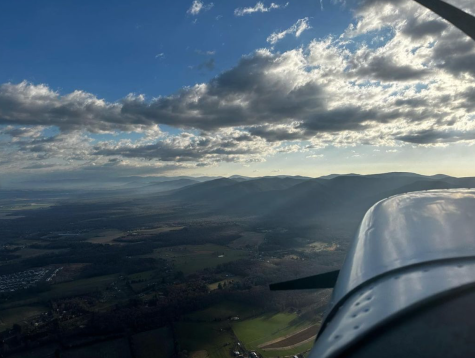
Finishing a training program costs thousands of dollars — despite completing theirs relatively quickly, Davis and DeVito have spent $10,000 and $18,000 on the courses, respectively.
Nevertheless, Davis thinks it is a “very rewarding job.” The annual starting salary for pilots is around six figures due to a current pilot shortage.
Davis wants potential fliers to be aware of the responsibilities that come with piloting, but also of the opportunities for cost-efficient and flexible travel. “You can fly yourself there. You don’t have to pay for all these tickets to go places,” he said. “You don’t have to worry about anyone else.”
DeVito is similarly passionate about sharing the wonders of flying with others.
After getting his Private Pilot Certificate, he celebrated by introducing youth to aviation during the Shenandoah Run the Runway 5k. He found it rewarding to see “the smiles on their faces” and spread his love of flying.
“Younger me would be really proud of where I am today. I was in these kids’ shoes when I was five or six, and here I am now on the other side.”

Senior Anna Zheng (she/her) is in her fourth year of journalism. Previously, she served as Social Media Editor for two years and spent a summer at the...